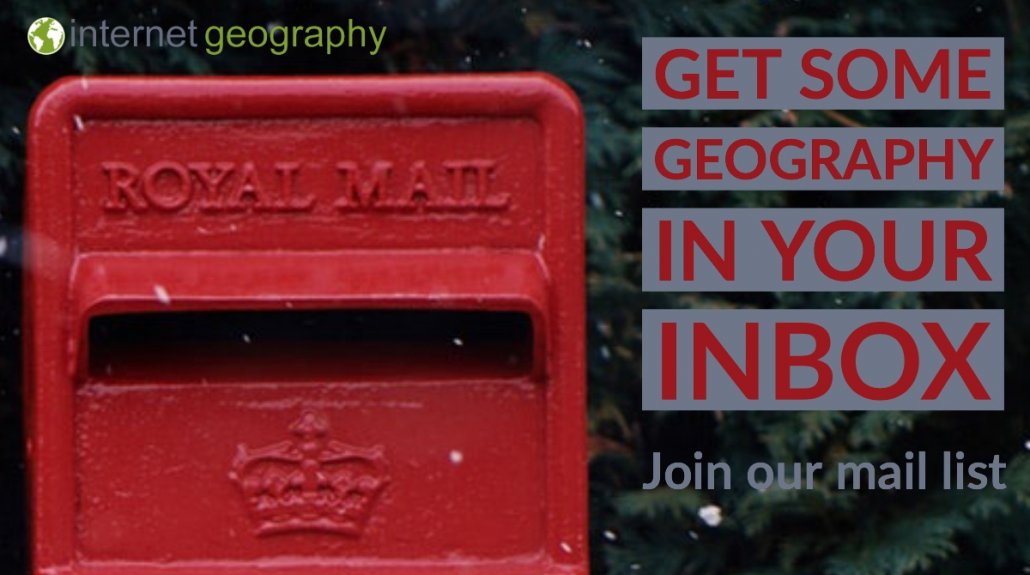How has urban change created opportunities in Bristol?
Social Opportunities in Bristol
What changes are affecting Bristol?
Urban change in Bristol has created a range of social opportunities. Some of the changes bringing opportunities include:
- The rapid growth of Bristol’s population
- An ethnically diverse population resulting from high levels of migration
- With two universities, Bristol has a youthful population
- Over 2 million people live within 50km of Bristol
- Bristol’s connectivity has improved with a second River Severn crossing and improvements to motorways in the area
Bristol’s Cultural Mix
Bristol is home to a youthful population that fuels a lively underground music culture, extending beyond the typical range of nightclubs and bars. The Colston Hall, renowned for hosting various concerts and performances, features notable artists from diverse genres such as rock, pop, jazz, folk, global, and classical music.
Equally vibrant is the theatre scene with the Bristol Old Vic, the Bristol Hippodrome, and the Tobacco Factory presenting a broad spectrum of entertainment offerings, including plays, dance shows, operas, and musical theatre.
The city’s multicultural demographics enrich its attractions further. Events like the St Paul’s Carnival are a testament to this diversity, reflecting the cultural impact on the city.
Culinary delights are another aspect of this multicultural influence, with the city offering many dining options ranging from Indian, Chinese, Japanese, Filipino, Thai, Malay, Korean, and Polish to Caribbean cuisines.
Recreation and Entertainment
Bristol is home to two professional football clubs, City and Rovers, and a rugby union team. The city also serves as the hub for Gloucestershire County Cricket. These sports teams are continually upgrading their stadiums, aiming to offer diverse leisure, conference facilities, and accommodation options.
Shopping
Shopping has emerged as an increasingly popular leisure activity, and Bristol has been adapting to this change. The advent of the Cribbs Causeway retail park outside the city impacted the older Broadmead shopping complex in the city centre, signalling a need for more updated shopping facilities. These updates were essential for various reasons, including crime reduction, environmental improvement, competition with other cities, and the attraction of employment opportunities.
Several initiatives have been taken to revitalize the Central Business District (CBD) and draw shoppers back to this hub. These include the pedestrianization of the area and the installation of CCTV cameras for enhanced safety. Efforts have been made to create a more appealing shopping environment through new street furniture, attractive floral displays, and landscaping.
Open street markets have been developed to add to the shopping variety, and public transportation to the centre has been improved, with options such as park-and-ride services. Tourism is being promoted to boost spending by transforming the nearby Old Market district into a conservation area, adding another dimension to the city’s appeal.
Economic Opportunities in Bristol
How has urban change created employment opportunities in Bristol?
Urban growth and redevelopment have brought a range of economic opportunities to Bristol, including:
- The migration of skilled youthful entrepreneurs from other areas of the UK and abroad to the city.
- The local universities and the skilled, educated graduate workforce conduct research and development.
- Extensive urban regeneration has transformed derelict industrial buildings and the transformation of brownfield sites.
- Four hundred new companies have moved into Bristol’s Temple Quarter Enterprise Zone, home to various high-tech and creative businesses.
- A new superfast broadband infrastructure.
- Bristol’s cultural heritage and ‘green’ credentials.
How has employment in Bristol changed?
Historically, Bristol’s primary industries were centred around its role as a port. It facilitated the production of cigarettes from tobacco imported from the West Indies, and sherry was produced using wine imported from Bordeaux. However, the closure of the city centre port resulted in vacant warehouses. These have since been repurposed into residential flats and venues for new industrial ventures.
Significant growth has been witnessed in Bristol’s tertiary (service-oriented) and quaternary (high-tech) sectors. As of 2015, the city boasted an unemployment rate below the UK average. Furthermore, the employment growth rate in Bristol is forecasted to outpace that of the UK overall.
The development of high-tech industries in Bristol
Bristol’s industrial landscape has seen a significant shift, with an increasing workforce engaged in high-tech companies. The city is a hotspot for micro-electronic and silicon design businesses, boasting 50 firms – the largest cluster outside California’s Silicon Valley. Global companies like Aardman Animations, Hewlett-Packard, and Toshiba have set up bases in Bristol alongside smaller firms specializing in robotics, 3D printing, and other cutting-edge technologies. Furthermore, the Chinese telecommunications giant, Huawei, has made substantial investments in the city.
Several factors have made Bristol an attractive destination for high-tech businesses. These include a £100 million government grant establishing Bristol as a SuperConnected City with broadband download speeds of at least 80Mbps. The city benefits from a strong partnership between the city council and the university. The presence of a highly educated and skilled workforce, the advanced research carried out at the university, and a culture of collaboration across various industries in research and development efforts further contribute to Bristol’s appeal.
Environmental Opportunities in Bristol
How are changes affecting Bristol’s environment?
In 2015, Bristol was the first UK city to be designated the prestigious European Green Capital status with a strategic plan to achieve significant advancements in transport, energy efficiency, and renewable energy by 2020.
Furthermore, the city is dedicated to expanding job opportunities in low-carbon industries, aiming to increase the current 9000 jobs to 17000 by 2030. The green economy within the city has shown promising growth, with a current annual rate as high as 4.7 per cent.
In its inaugural year as European Green Capital in 2015, Bristol witnessed several notable achievements:
- One hundred seventy-five businesses established a ‘Green’ action plan.
- Major events included an international festival focusing on leadership in green technology and an international competition for developing mobile apps and environmental awareness games.
- The city installed its first 100 electric car charging points.
- Every primary school student in Bristol planted a tree, contributing to the city’s green coverage.
Urban Greening
Bristol boasts a rich array of open spaces, with over a third of the city dedicated to such areas and over 90 per cent of residents living within 350m of parklands or waterways. The city is home to eight nature reserves and three hundred parks. An example of its greening efforts is Queen Square, a busy dual carriageway that has since been transformed into an open green space featuring cycle routes.
The city has undertaken several green initiatives with goals such as:
- Elevating Sites of Nature Conservation Interest (SNCI) to top conservation condition by 2026
- Designating 27 per cent of the city as part of a wildlife network
- Setting objectives for wildlife in non-natural habitats like cemeteries
- Achieving a tree coverage of 30 per cent across the city
One such initiative is the new housing development at Portbury Wharf, which was approved by the local council to develop the adjacent area into a nature reserve. These open water and meadow areas serve as valuable habitats for wildlife, birds, and plants.
In 2019 the ‘Replant Bristol‘ campaign was launched, with the target to plant 250 000 new trees by 2030 to contribute to the city’s carbon neutral goal by 2050.
Bristol’s Integrated Transport System (ITS)
In 2012, Bristol was ranked the second most congested city in the UK, with rush hour journeys taking approximately a third longer than during non-peak hours. Despite this, Bristol sees more people walking and cycling than any other UK city, with 57 per cent of its population opting for these modes of transport. The city aims to double the number of cyclists by 2020.
At the heart of Bristol’s strategy is developing an Integrated Transport System (ITS), which connects different forms of transport within the city and surrounding areas. The ITS aims to enhance accessibility to and within the city, thereby reducing traffic congestion, cutting transport costs, improving the profitability of city industries, and increasing employment opportunities within Bristol.
An ITS is designed to streamline travel by interconnecting various transportation methods to promote public transport over personal vehicles. This transition would lead to more sustainable transportation while also alleviating traffic congestion. The Rapid Transit Network is a component of this strategy, comprising three bus routes that link the central Temple Meads railway station with the city’s Park and Ride sites. Construction began in early 2015, and the network became operational in 2018.
As part of its comprehensive transport strategy, Bristol plans numerous rail improvements, including the line’s electrification to London. This upgrade will foster greener transportation, ensure more reliable journeys, and improve connections throughout southern England and South Wales.
Related Topics
Use the images below to explore related GeoTopics.



